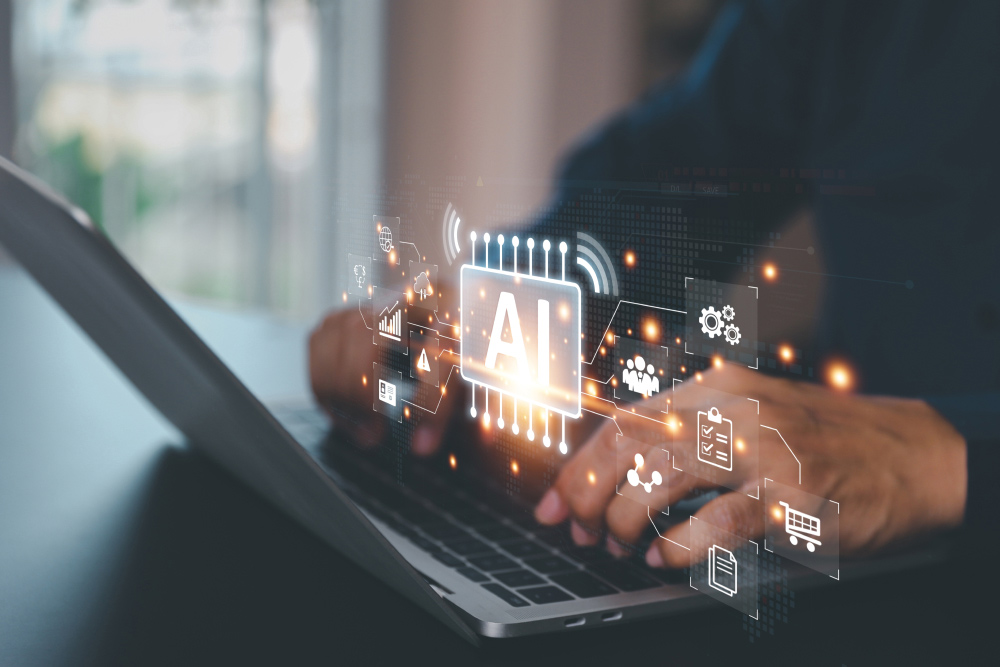Impact of AI in the modern workspace

Artificial Intelligence (AI) is rapidly transforming many modern workplaces. The technology brings remarkable benefits for companies, including automation of repetitive tasks and improved productivity. While AI helps companies with administrative tasks and decision-making, more companies are relying on this technology, leading to growing concerns about ethical compliance and data accuracy. Businesses must understand both the benefits and challenges of AI integration to find the right balance between innovation and responsible use.
Advantages of AI in the workspace
1. Task automation
One of the biggest benefits of introducing AI tools in a workspace is their ability to automate and handle repetitive tasks. Companies can hand over tasks like processing transactions, sorting through large data sets, or managing emails and chat queries over to the AI tool. It streamlines processes that would have otherwise taken up valuable time. It also lets employees focus on strategic and more complex tasks.
2. Accuracy and security
When employees are unwell, tired, or stressed, it might lead to mistakes or accidents. AI, unlike humans, is not prone to these conditions and is therefore a safer worker in the workspace. Related tools can also make the task easier when they collaborate with humans. In industries with high-risk jobs, implementing AI tools and robots can be beneficial in decreasing workplace mishaps and improving safety.
3. Improved productivity
While AI tools greatly improve workplace efficiency by handling repetitive and time-consuming tasks, they also support smarter decision-making by offering data-driven insights. Acting as a helpful co-pilot, they help with tasks like summarizing data, drafting emails, and highlighting key details during customer interactions. This makes work easier and more productive while enhancing collaboration.
4. Accelerated learning
AI offers vast capabilities that can seem overwhelming at first. But once businesses embrace them, workplace learning becomes more accessible and tailored. AI tools can be used for research purposes, providing templates for repetitive or similar task groups, and educating employees to future-proof their jobs. It can handle both simple and complex topics, helping to bridge the skill gap.
Disadvantages of AI in the workspace
1. Loss of human touch
The ability of AI tools to automate and speed up tasks can come with a potential downside. Tasks like data analysis, customer service, and decision-making can lose human touch. While AI bots can handle queries and complaints, they cannot provide the empathy and understanding that a human dealing with customer service can offer. In situations where emotional intelligence and nuanced understanding are essential, AI bot responses can lead to significant customer dissatisfaction. For businesses prioritizing building relationships and trust, depersonalization of services can be a huge concern.
2. Low creativity
AI tools can help workspaces process large amounts of data quickly and perform repetitive tasks. But workspaces cannot emulate the creativity a human mind can bring to the task. Generating original ideas is essential for problem-solving and innovation. In fields like design, strategy, and writing, over-reliance on AI tools can make the workplace less dynamic.
3. Ethical issues
For completely unbiased AI results, the tool must have been trained with unbiased and reliable data. When an algorithm is based on flawed data, it can exacerbate and perpetuate the existing workplace bias. If an AI tool assists a workplace with its hiring process, the type of data it is trained on can lead to bias in its potential hires. Developing and implementing AI tools to ensure they are equitable and fair can be a monumental challenge; it requires companies to have teams that can continuously regulate and oversee the results.
4. Accuracy
Despite being fast at processing loads of data, it is important to know that even AI tools can make mistakes. The accuracy of information or its tasks depends on the quantity and quality of information that the tool has been trained on. If the training data is flawed, the workspace AI outputs will also be biased. Inaccurate data can then lead to potential ethical violations or legal issues.
Industries centered on data processing, analysis, and digital operations have seen the highest integration of AI tools. What began as a focus on automation has evolved into its adoption in creative and service-based fields like marketing, design, and customer support. Today, AI serves not only as an efficiency enhancer but also as a creative collaborator, reshaping how diverse professions approach innovation and productivity.










